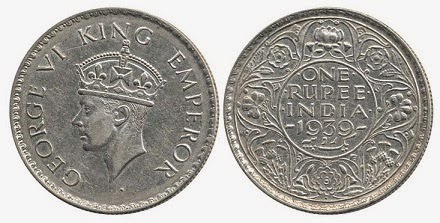Book Review - City-State Coins of Ancient India
Book Name: CITY-STATE COINS OF ANCIENT INDIA
Authors: Girish Sharma, Indubala Sharma, Dhawal Sharma
Editor: Dhawal Sharma
Language: English (U.S.)
Edition: Kindle Edition (e-book)
Year of Publication: 2020
Publisher: Numismatic Research Trust, Indore (India)
Seller: Amazon.in [Click this link for purchase]
Price: INR 799/-
Book Review by Dr. Nilaish
The book 'CITY-STATE COINS OF ANCIENT INDIA' is a well thought plot laid by Shri Girish Sharma many years ago when he first started collecting Ancient Coins of India. In his book he refers, that even collection was kept for him in boxes by his parents and forefathers! Indeed a great untold story which needs a subtle audience.
The book is divided into twelve chapters, and starts with a Message from the Authors. Further, he describes the prelude to this writing and experiences of many years of collecting these magnificent coins. In this review, I will try to be neutral and there is no conflict of interest.
The Chapter 1 starts with an apt contemporary definition of 'CITY-STATE'. Authors have done justice to the topic and presented the concept of 'micro-sovereignty' confined to small sovereign cities which is also prevalent today. For e.g. Singapore. All new collectors can relate to the dialogues and flow of ideas. The Chapter 2 basically covers brief time-line of events as precedence to buildup the context of the book. The most noteworthy feature of the design is seen here - a three dimensional image of Pushyamitra Sunga (Shunga Empire, circa 180 B.C.) in royal attire. It is indeed very thrilling to observe this creation based on true facts and very creative imagination. The brief sketch covers Pre-Bactrian era, Bactrian era, Mauryan Empire events. The statue of Alexander the Great is shown on a prancing horse.
Further, Chapters are based on City States such as, City-state Mahismati incribed coins (different from Kalachuris of Mahismati), Eran, Tripuri, Vidisha, Madhyamika, the secret place of Suktimati (described in detail using maps). An important note mentioned in Chapter named, VATSAVAKA:
There is foreign ancient account which talks about Battle of Assaceni circa 326 B.C. - where the local Queen Kripa troubled Alexander's army and fought very bravely. Ghosh ... giving me goosebumps!
Other Chapters are, Nadi Nagar, Kurupurika, Nigama / Panch Nigama / Guild Nigama are well represented. In the end, a very good Brahmi script tool is provided for reference. A full list of Bibliography is presented in the end. A very good attempt to write this book for novice and history buffs. However, this work is not for those who are looking for extensive academic rigor. A very good easy read for collectors and those who enjoys and appreciates our cultural heritage. A must for all numismatists!
About Reviewer:
Dr. Nilaish is an Assistant Professor of Management at a B-School. He has years of collecting and numismatic research experience. During his postgraduate studies in England, he was elected Fellow of Royal Numismatic Society of London. He has published various numismatic books and written papers in international journals of repute. Currently, he is working on the epigraphy of ancient coins. He is a passionate numismatist and collector. He is also nominated as National Adviser of Rastriya Mudra Parishad (Indore), India.



